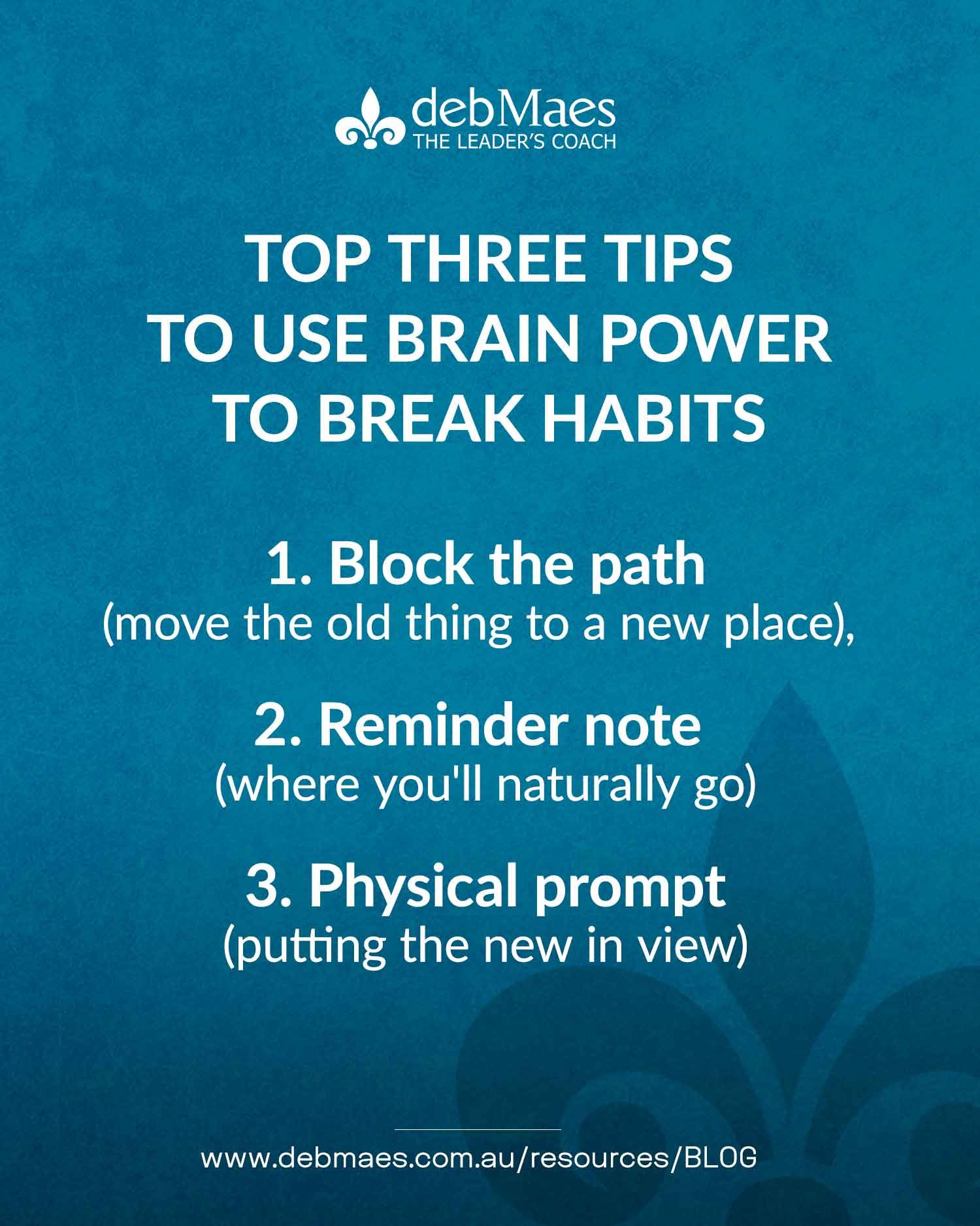Using Brain Power To Break Habits: Top Three Tips
last updated on june 2022
A funny thing happened to me a few years ago; it illustrates how our patterns or habits are really powerful. Here is what happened … the coffee jar was empty and I went to the pantry to look for another pack, but none was there.
My husband being a very efficient and competent keeper of the house never lets anything run out. ‘Strange’, I thought, ‘before I go buy more coffee I better just double check’. He was away, so I texted him to ask if there was any coffee. Before I tell you his answer let me give you some background.
We had just spent 18 months renovating our kitchen/dining room area and had just installed a new pantry. With our own hands we took the wall out and built the new cupboards and later I painted the new room together with my father.
I sat every day in our new bright open space admiring our new shiny white cupboards and the lovely open space we created. Not something that is easy to forget you might think.
My husband’s reply was, ‘there are 3 packs on the top rack’. ‘Top rack, I thought, ‘doesn’t he mean shelf’. I had gone to the old pantry that was in the laundry and totally forgotten about the new cupboards we have even though I look at them every day.
This reminded me of how strong the neural pathways in our brain become when we do things repeatedly. And why it is difficult to break old habits even though the old habit no longer makes any sense. This is because there is no emotion in a habit, there is no thought and it happens in a specific context. So, if our old patterns are wired so strongly into our neurology how do we support ourselves in stopping old habits?
We can use these same 3 features to support our change i.e. prepare something that will reactivate our thinking in the specific context without triggering emotion. How?
- Block the path (move the old thing to a new place), forcing you to be conscious.
One way is to do something that will block us from getting to the end point or to stop us achieving the result of the old behaviour. That is what happened on this occasion. When I got to the cupboard, the coffee wasn’t there. I couldn’t achieve my result. This made me switch over into conscious processing and THINK.
- Reminder note (where you'll naturally go),
to help you fermenter your new intention, Another thing we can do is set up a reminder. I could have stuck a note on the old cupboard saying, ‘remember to look in the new pantry’.
- Physical prompt (putting the new in view),
a practical support of what you want to do. Here is an example of combining these. I used to, every morning, go to the kitchen and press the button on the coffee machine. I decided that I wanted to drink water in the morning before I had a coffee. So I moved the coffee machine away from where it was normally. That way when I went to press the button it simply wasn’t there. I had to think. In addition, I put a jug of water in its place. This reminded me of what I had decided consciously.
How do you think you can use this information to break habits that no longer serve you?
More articles for you to enjoy

How to Navigate Life’s Course; THE CURVE

7 Daily Actions Leaders Take To Keep On Top
‘On Top. On top of what?’, do I hear you ask? Answer: Self-confidence.

Deb Maes
Deb Maes, M.A. Com is like a magician in the way she is able to discern the exact key to unlock more of the untapped potential in leaders.


